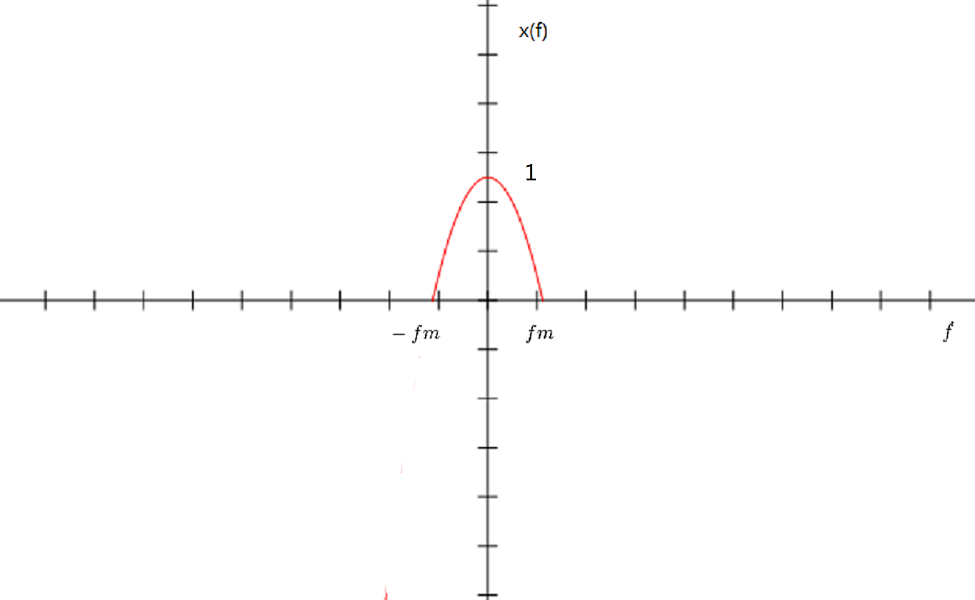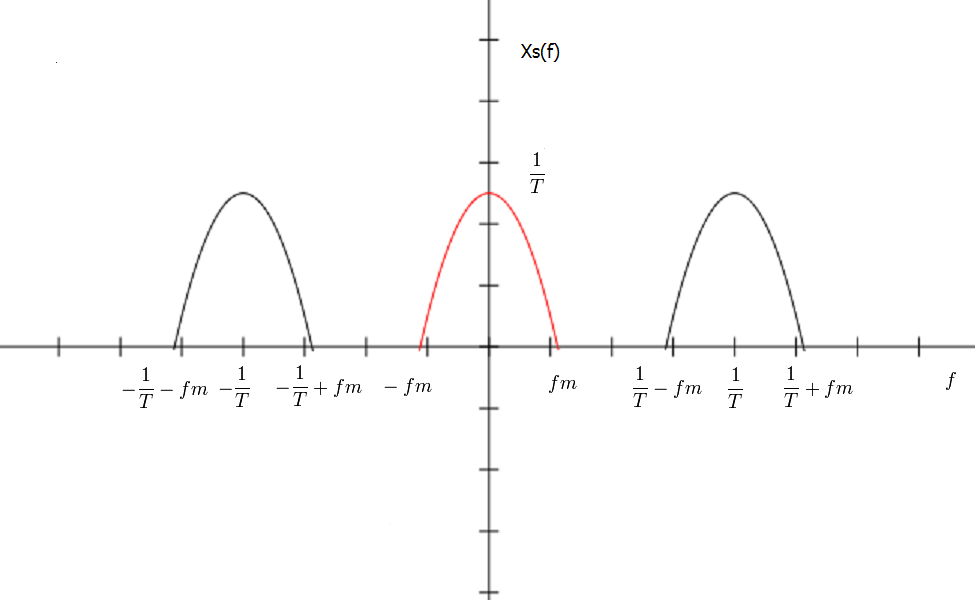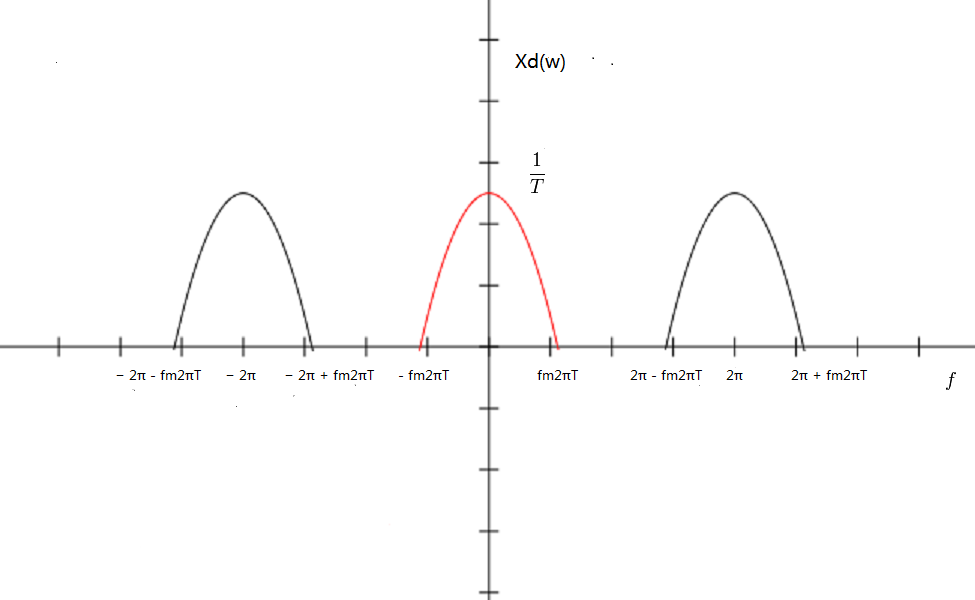| Line 6: | Line 6: | ||
<center><font size= 4> | <center><font size= 4> | ||
| − | Frequency | + | Frequency domain view of the relationship between a signal and a sampling of that signal |
</font size> | </font size> | ||
| − | A [https://www.projectrhea.org/learning/slectures.php slecture] by [[ECE]] student | + | A [https://www.projectrhea.org/learning/slectures.php slecture] by [[ECE]] student Botao Chen |
Partly based on the [[2014_Fall_ECE_438_Boutin|ECE438 Fall 2014 lecture]] material of [[user:mboutin|Prof. Mireille Boutin]]. | Partly based on the [[2014_Fall_ECE_438_Boutin|ECE438 Fall 2014 lecture]] material of [[user:mboutin|Prof. Mireille Boutin]]. | ||
</center> | </center> | ||
| − | |||
| + | ---- | ||
<font size = 3> | <font size = 3> | ||
==Outline== | ==Outline== | ||
#Introduction | #Introduction | ||
| − | # | + | #Derivation |
| + | #Example | ||
#Conclusion | #Conclusion | ||
| + | ---- | ||
| + | |||
| + | ==Introduction== | ||
| + | |||
| + | In this slecture I will discuss about the relations between the original signal <math> X(f) </math> (the CTFT of <math> x(t) </math> ), sampling continuous time signal <math> X_s(f) </math> (the CTFT of <math> x_s(t) </math> ) and sampling discrete time signal <math> X_d(\omega) </math> (the DTFT of <math> x_d[n] </math> ) in frequency domain and give a specific example showing the relations. | ||
| + | ---- | ||
| + | |||
| + | ==Derivation== | ||
| + | |||
| + | The first thing which need to be clarified is that there two different types of sampling signal: <math> x_s(t) </math> and <math> x_d[n] </math>. <math> x_s(t) </math> is created by multiplying a impulse train <math> P_T(t) </math> with the original signal <math> x(t) </math> and actually <math> x_s(t) </math> is <math> comb_T(x(t)) </math> where T is the sampling period. | ||
| + | However the <math> x_d[n] </math> is <math> x(nT) </math> where T is the sampling period. | ||
| + | |||
| + | Now we first concentrate on the relationship between <math> X(f) </math> and <math> X_s(f) </math>. | ||
| + | |||
| + | We know that <math> x_s(t) = x(t) \times P_T(t) </math>, we can derive the relationship between <math> x_s(t) </math> and <math> x(t) </math> in the following way: | ||
| + | |||
| + | <div style="margin-left: 3em;"> | ||
| + | <math> | ||
| + | \begin{align} | ||
| + | F(comb_T(x(t)) &= F(x(t) \times P_T(t))\\ | ||
| + | &= X(f)*F(P_T(t))\\ | ||
| + | &= X(f)*\frac{1}{T}\sum_{n = -\infty}^\infty \delta(f-\frac{n}{T})\\ | ||
| + | &= \frac{1}{T}X(f)*P_\frac{1}{T}(f)\\ | ||
| + | &= \frac{1}{T}rep_\frac{1}{T}X(f)\\ | ||
| + | \end{align} | ||
| + | </math> | ||
| + | </div> | ||
| + | <font size> | ||
| + | |||
| + | Show this relationship in graph below: | ||
| + | |||
| + | ---- | ||
| + | |||
| + | ==example== | ||
| + | |||
| + | [[Image:Xfcbt.png]] | ||
| + | |||
| + | [[Image:xsfcbt.png]] | ||
| + | |||
| + | ---- | ||
| + | |||
| + | ==Derivation== | ||
| + | |||
| + | Then we are going to find the relation between <math> X_s(f) </math> and <math> X_d(\omega) </math> | ||
| + | |||
| + | We know another way to express CTFT of <math> x_s(t) </math>: | ||
| + | |||
| + | <div style="margin-left: 3em;"> | ||
| + | <math> | ||
| + | \begin{align} | ||
| + | X_s(f) &= F(\sum_{n = -\infty}^\infty x(nT)\delta(t-nT))\\ | ||
| + | &= \sum_{n = -\infty}^\infty x(nT)F(\delta(t-nT))\\ | ||
| + | &= \sum_{n = -\infty}^\infty x(nT)e^{-j2\pi fnT}\\ | ||
| + | \end{align} | ||
| + | </math> | ||
| + | </div> | ||
| + | <font size> | ||
| + | |||
| + | compare it with DTFT of <math> x_d[n] </math>: | ||
| + | |||
| + | <div style="margin-left: 3em;"> | ||
| + | <math> | ||
| + | \begin{align} | ||
| + | X_d(\omega) &= \sum_{n = -\infty}^\infty x_d[n]e^{-j\omega n}\\ | ||
| + | &= \sum_{n = -\infty}^\infty x(nT)e^{-j\omega n}\\ | ||
| + | \end{align} | ||
| + | </math> | ||
| + | </div> | ||
| + | <font size> | ||
| + | |||
| + | we can find that: | ||
| + | |||
| + | <div style="margin-left: 3em;"> | ||
| + | <math> | ||
| + | \begin{align} | ||
| + | X_d(2\pi Tf) &= X_s(f)\\ | ||
| + | \end{align} | ||
| + | </math> | ||
| + | </div> | ||
| + | <font size> | ||
| + | |||
| + | if <math> f = \frac{1}{T} </math> | ||
| + | |||
| + | we have that: | ||
| + | |||
| + | <div style="margin-left: 3em;"> | ||
| + | <math> | ||
| + | \begin{align} | ||
| + | X_d(2\pi ) &= X_s(\frac{1}{T})\\ | ||
| + | \end{align} | ||
| + | </math> | ||
| + | </div> | ||
| + | <font size> | ||
| + | |||
| + | from this equation, we can know the relationship between <math> X_s(f) </math> and <math> X_d(\omega) </math> and the relationship is showed in graph as below: | ||
| + | |||
| + | ---- | ||
| + | |||
| + | ==example== | ||
| + | |||
| + | [[Image:xsfcbt.png]] | ||
| + | |||
| + | [[Image:xdwcbt.png]] | ||
| + | |||
| + | ---- | ||
| + | |||
| + | ==conclusion== | ||
| + | |||
| + | So the relationship between <math> X(f) </math> and <math> X_s(f) </math> is that <math> X_s(f) </math> is a a rep of <math> X(f) </math> in frequency domain with period of <math> \frac{1}{T} </math> and magnitude scaled by <math> \frac{1}{T} </math>. | ||
| + | the relationship between <math> X(f) </math> and <math> X_d(\omega) </math> is that <math> X_d(\omega) </math> is also a a rep of <math> X(f) </math> in frequency domain with period <math> 2\pi </math> and magnitude is also scaled by <math> \frac{1}{T} </math>, but the frequency is scaled by <math> 2\pi T </math> | ||
---- | ---- | ||
Revision as of 09:24, 6 October 2014
Frequency domain view of the relationship between a signal and a sampling of that signal
A slecture by ECE student Botao Chen
Partly based on the ECE438 Fall 2014 lecture material of Prof. Mireille Boutin.
Outline
- Introduction
- Derivation
- Example
- Conclusion
Introduction
In this slecture I will discuss about the relations between the original signal $ X(f) $ (the CTFT of $ x(t) $ ), sampling continuous time signal $ X_s(f) $ (the CTFT of $ x_s(t) $ ) and sampling discrete time signal $ X_d(\omega) $ (the DTFT of $ x_d[n] $ ) in frequency domain and give a specific example showing the relations.
Derivation
The first thing which need to be clarified is that there two different types of sampling signal: $ x_s(t) $ and $ x_d[n] $. $ x_s(t) $ is created by multiplying a impulse train $ P_T(t) $ with the original signal $ x(t) $ and actually $ x_s(t) $ is $ comb_T(x(t)) $ where T is the sampling period. However the $ x_d[n] $ is $ x(nT) $ where T is the sampling period.
Now we first concentrate on the relationship between $ X(f) $ and $ X_s(f) $.
We know that $ x_s(t) = x(t) \times P_T(t) $, we can derive the relationship between $ x_s(t) $ and $ x(t) $ in the following way:
$ \begin{align} F(comb_T(x(t)) &= F(x(t) \times P_T(t))\\ &= X(f)*F(P_T(t))\\ &= X(f)*\frac{1}{T}\sum_{n = -\infty}^\infty \delta(f-\frac{n}{T})\\ &= \frac{1}{T}X(f)*P_\frac{1}{T}(f)\\ &= \frac{1}{T}rep_\frac{1}{T}X(f)\\ \end{align} $
Show this relationship in graph below:
example
Derivation
Then we are going to find the relation between $ X_s(f) $ and $ X_d(\omega) $
We know another way to express CTFT of $ x_s(t) $:
$ \begin{align} X_s(f) &= F(\sum_{n = -\infty}^\infty x(nT)\delta(t-nT))\\ &= \sum_{n = -\infty}^\infty x(nT)F(\delta(t-nT))\\ &= \sum_{n = -\infty}^\infty x(nT)e^{-j2\pi fnT}\\ \end{align} $
compare it with DTFT of $ x_d[n] $:
$ \begin{align} X_d(\omega) &= \sum_{n = -\infty}^\infty x_d[n]e^{-j\omega n}\\ &= \sum_{n = -\infty}^\infty x(nT)e^{-j\omega n}\\ \end{align} $
we can find that:
$ \begin{align} X_d(2\pi Tf) &= X_s(f)\\ \end{align} $
if $ f = \frac{1}{T} $
we have that:
$ \begin{align} X_d(2\pi ) &= X_s(\frac{1}{T})\\ \end{align} $
from this equation, we can know the relationship between $ X_s(f) $ and $ X_d(\omega) $ and the relationship is showed in graph as below:
example
conclusion
So the relationship between $ X(f) $ and $ X_s(f) $ is that $ X_s(f) $ is a a rep of $ X(f) $ in frequency domain with period of $ \frac{1}{T} $ and magnitude scaled by $ \frac{1}{T} $. the relationship between $ X(f) $ and $ X_d(\omega) $ is that $ X_d(\omega) $ is also a a rep of $ X(f) $ in frequency domain with period $ 2\pi $ and magnitude is also scaled by $ \frac{1}{T} $, but the frequency is scaled by $ 2\pi T $




